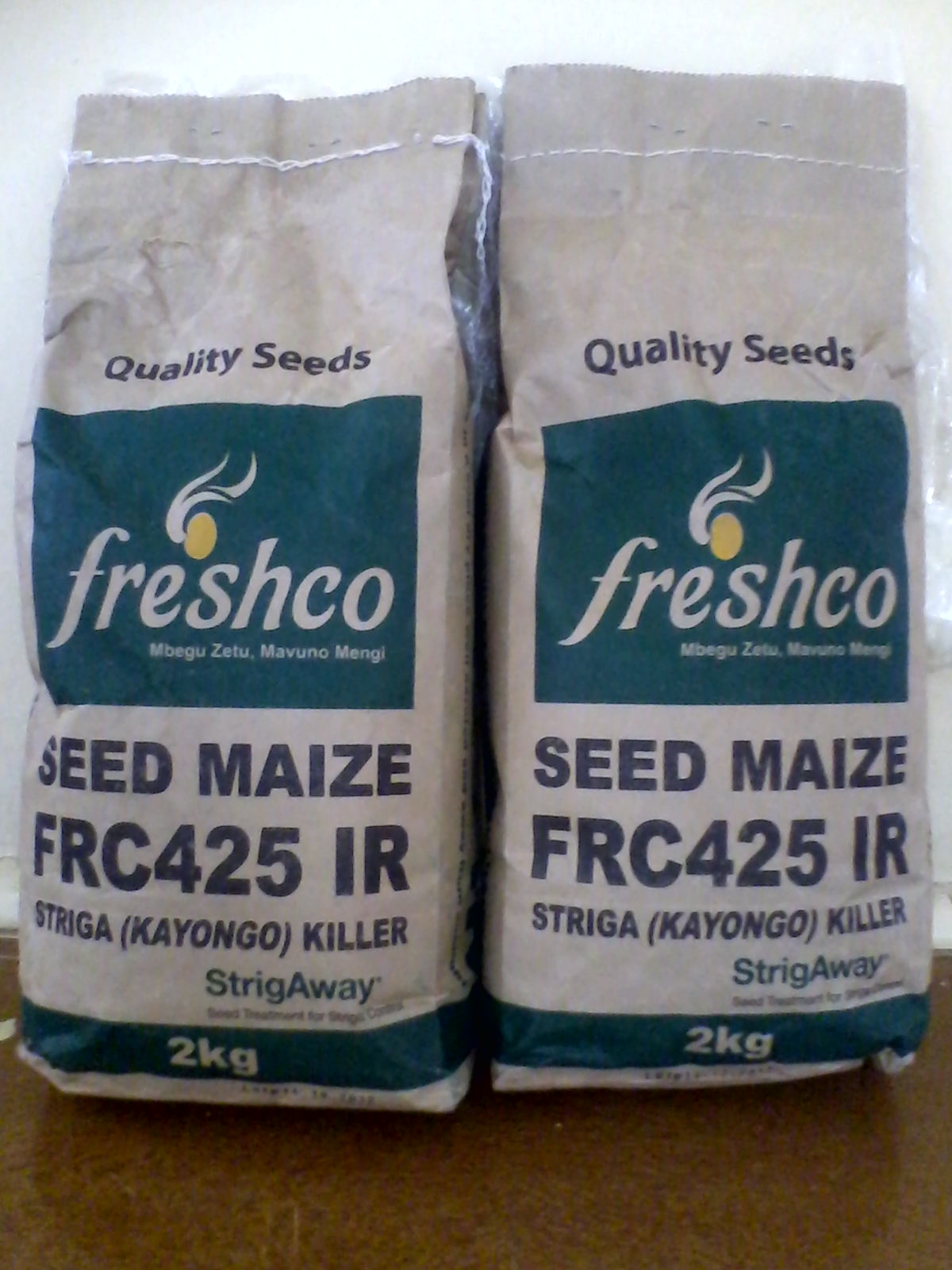Imazapyr resistant maize for Striga management (IR maize)
Summary
Commercial seed manufacturers are marketing improved maize varieties that are modified to be resistant against imazapyr, a herbicide protecting the crop against parasitic Striga weeds. IR maize lines have been developed for many areas in Sub-Saharan Africa where production is severely affected by the pest that feeds of nutrients and water from the crop. Using IR maize seed coated in the herbicide instead of hybrid varieties that are not protected against Striga has widely been proven to enhance grain yields and reduce further dispersal of the pest on farmlands if combined with appropriate soil and fertilizer management. IR maize allows to use lower quantities of herbicide for Striga control as seed dressing brings the imazapyr agent right to where it is needed, and kills off pest spores that germinate in soil close to roots during the critical stages of crop establishment.
About the Solution
Breeder can engineer maize germplasm that is resistant to imazapyr herbicides by incorporating an ‘IR’ gene derived from natural lines, and then use common multiplication techniques for bringing the variety to markets. Seed coating of herbicide gives protection to roots throughout the growing season, having the greater impact during the first eight weeks after planting in which maize crops are able to grow without being harmed by parasitism. Imazapyr is inhibiting the germination of spores from Striga weeds in the soil next to maize seed and kills these of terminally. The herbicide has a non-selective formulation meaning that the growth and negative effect of other common types of weeds are also reduced by use of IR maize. Protection against Striga parasitism is boosting grain and stover productivity of maize, and its nutrient and water use efficiency. Use of IR varieties has led to significant improvements of food self-sufficiency and economic returns in the maize value chain across major growing areas of Sub-Saharan Africa. Seed manufacturers are furthermore marketing maize varieties that combine imazapyr resistance with other improved traits such as drought tolerance and bio-fortification.
Cultivating IR maize varieties is highly advantageous on Striga infested farmlands of millions of subsistence and commercial farmers in Sub-Saharan Africa that loose out on 30% to 80% of potential maize grain yields every season due to the obnoxious weed pest. Numerous independent field studies have shown that use of IR technology is leading to season-long protection against Striga on fields with a high to low Striga seedbank in soil and level of parasitism of maize varieties that are not treated with the herbicide. Use of IR maize on degraded fields with low soil fertility status necessarily has to be combined with the appropriate supply of inorganic fertilizers and organic resources for the intervention to increase grain production and food security.
The active ingredient of imazapyr herbicides is called imidazoline, and is mixed with salt and other compounds to form a powder that is stable. Imazapyr is a powerful amino-acid inhibitor that is not toxic to bees and soil-dwelling fauna, especially when applied in micro-doses through the IR technology. Herbicides are coated onto maize seeds by means of a binding agent like Arabic gum by vaporizing over the material and letting in mix and dry in a rotary blending system.
Seed of IR maize are planted as any normal maize crop following best soil and fertilizer management prescribed for particular growing areas and conditions. Farmers have to wear gloves when handling the coated IR maize seed for not exposing themselves to the toxic agent. To ensure the herbicide reaches the surrounding of the seed the surface of soils is best tamped down well. Inputs of inorganic fertilizers, especially nitrogen, are widely shown to get farmers higher yields from IR maize and lower Striga infestation because the applied nutrients are addressing limitations in soils that make the crop to grow stronger. On farmlands with high rates of Striga infestation there may be need for intercropping or rotating food legumes like soybean or cowpea, or forage legume like greenleaf clover.
Commercialization
Commercially available
Solution Images
Institutions

Accompanying Solutions
Drought tolerant varieties (DTMA, WEMA, others), Specialized pre-plant fertilizer blending and N topdressing, Maize-legume rotation and intercropping



